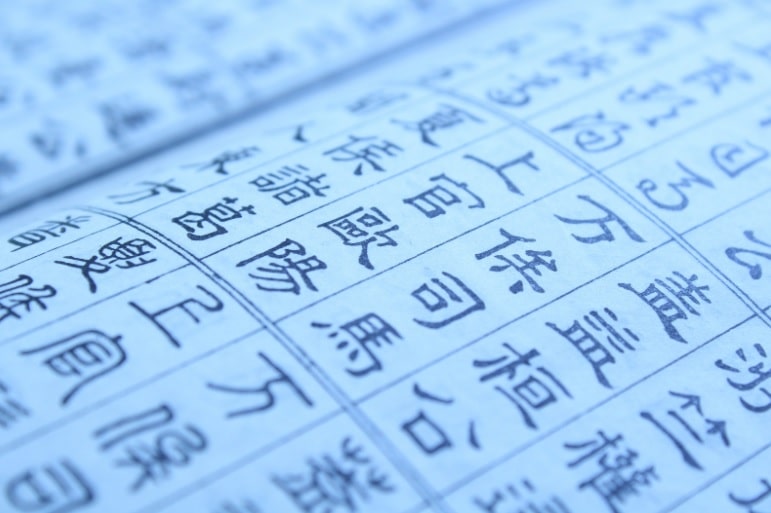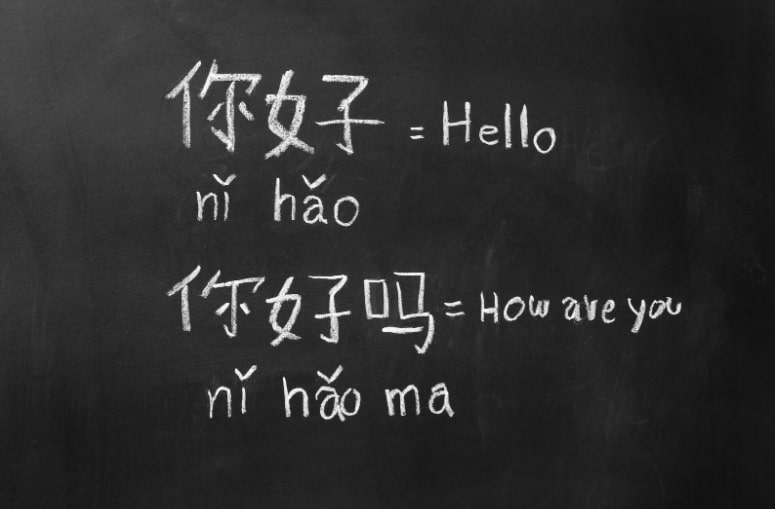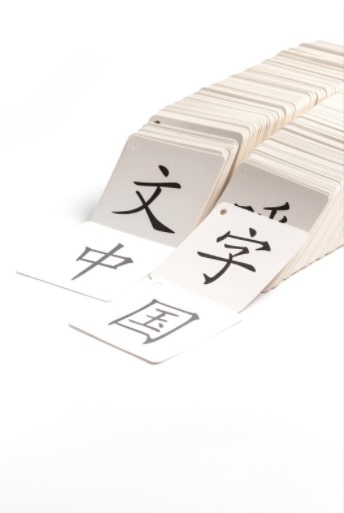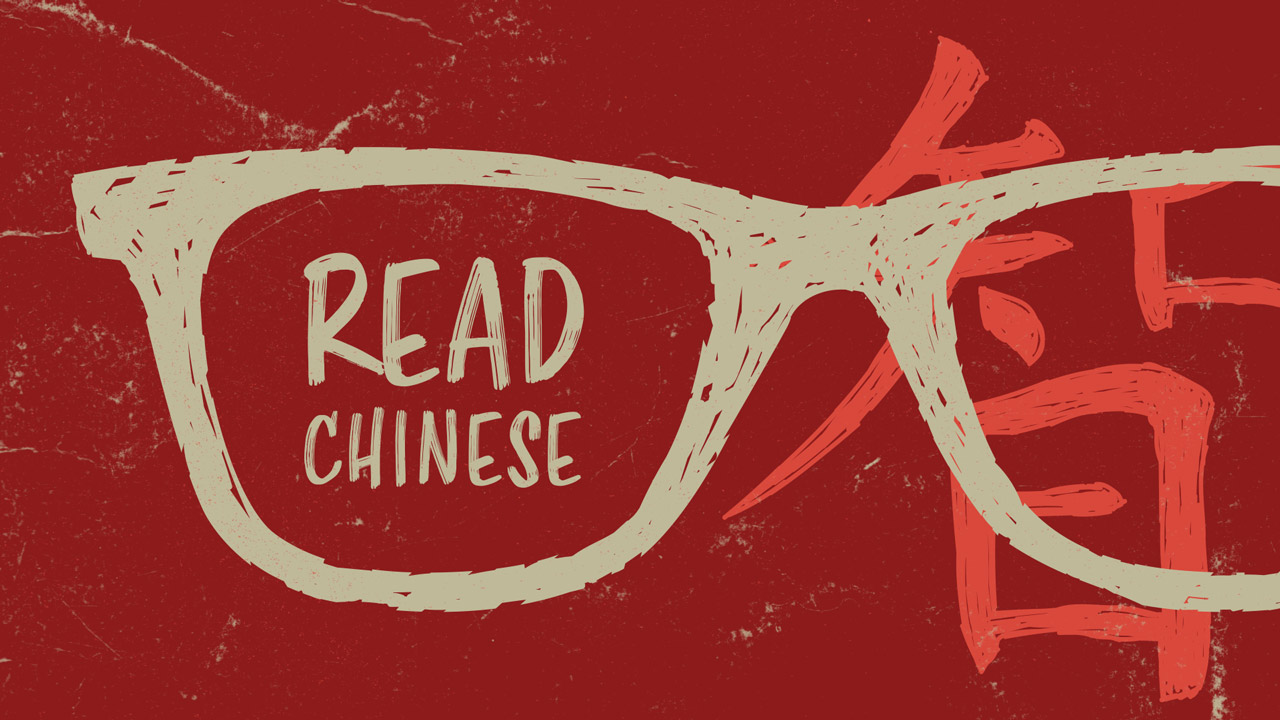How to Read Chinese and Make Mandarin Characters Less Confusing [In-depth Guide]

If you’re only just starting to learn Mandarin Chinese characters, you might feel a bit lost. It’s absolutely okay if the Chinese writing seems confusing at first, but once you learn the basics, it will become much easier.
First, know that modern Chinese texts are read left to right, top to bottom, just like English. But note that the ancient Chinese texts were written in columns, right to left.
To answer the question “How to read Chinese?”, you might also find it useful to first head to this article about simplified Chinese characters. You’ll learn the basics, such as the six main types of Chinese characters and how to visualize some of them based on their meanings.
Today, I’ll dig a little into that, but I’ll also explain how to read more easily with pinyin and how to use online tools and other resources to help you learn to read Chinese.

How Do You Read Chinese Writing?
Start With Pinyin
A simple answer to the question “How to read Mandarin?” is: start by learning pinyin and then continue with the simplest characters. Afterward, you’ll learn more advanced characters and it will all become much easier.
First things first: what’s pinyin? Pinyin is going to be your biggest helper when you learn to read Chinese characters. It’s a transcription of the Chinese characters into the Latin alphabet — the alphabet that I’m using to write this article.
The Chinese language doesn’t have an alphabet per se, so if you try to search for “Chinese alphabet”, most likely you’ll just find something about the characters. The same goes for Chinese letters. There’s no such thing, but pinyin is as close as it gets to it.
So back to pinyin. As a transcription from the Chinese characters to Latin alphabet, it’s a great help for a new learner. Pinyin also includes all the tones, for example, 汉字, “Chinese character” is transcribed as hànzì.
How to Read Chinese Characters
Now that you know what pinyin is, it’ll be easier for you to jump into learning how to understand Chinese writing. Let’s learn how to read Chinese “letters” and words — the characters.
Break Down the Characters
Remember that every Chinese character represents a syllable. It’s never just a letter, and sometimes it’s a whole word.
The most important component of every Chinese character is its radical. Character radicals often indicate the meaning of the character and sometimes the way it’s pronounced. Recognizing radicals will help you more easily find the Chinese character translation, as many Chinese dictionaries list characters based on their radicals.
You should be familiar with radicals, but don’t focus all your attention on them. Not every character is determined by its radical. Some radicals have different variations based on a character and the process of simplification of Chinese characters has made it even more difficult to recognize them.
There are 214 simplified Chinese radicals and here are a couple of examples:
- 火 (huǒ) – “fire” looks like this when it acts as a radical: 灬 , such as in the character 黑 (hēi, “black”)
- 水 (shuǐ) – “water” changes to 氵, for example: 河 (hé, “river”)
- 心 (xīn) – “heart” can either stay as it is at the bottom of a character: 想 (xiǎng, “want, think”) or can change to 忄when located on the left of a character: 快 (kuài, “fast”)
A great example that combines both the semantic (meaning) and phonetic (sound) components is the character 洋 (yáng, “ocean”), where 氵is the sign of water and 羊 (yáng, “sheep”) indicates how to pronounce it.
Another way to break up the characters and make it easier to read written Chinese is to visualize. As mentioned before, the simplification of characters has made it a bit more difficult to do that, but some characters still have a symbol that’s close to their meanings.
Have a look at these and try to guess what they mean:
- 口 (kǒu) – “mouth”
- 门 (mén) – “door”
- 三 (sān) – “three”
- 女 (nǚ) – “woman”
Break Down the Words and Sentences
In the same way some English words are formed, Chinese words often make sense when broken down.
For example, the English word “ex-boyfriend” is formed by three parts: “ex”, “boy” and “friend”.
The same word in Chinese, 前男友 or 前男朋友 (qián nányǒu or qián nánpéngyǒu, “ex-boyfriend”) is formed the exact same way. 前 (qián) in Chinese means “ex” or “before”, 男 (nán) is “male” and 朋友 (péngyǒu) means “friend”.
Let’s take a look at more examples of how you can guess the meaning of Chinese words:
- If you already know the character 四 (sì, “four”) and the character 月 (yuè, “month”), then you can guess that 四月 (sìyuè) means “four/fourth month”, therefore meaning “April”
- 女孩儿 (nǚháiér, “daughter”) is formed of 女 (nǚ, “female”) and 孩儿 (hái’ér, “child/baby”)
- 星期日 (xīngqírì, “Sunday”) is a combination of 星期 (xīngqí, “week”) and 日 (rì, “sun”)

Types of Chinese Characters
The reason why the types of Chinese characters are not in the very beginning of this article is simple: you don’t need to learn about them to be able to read Chinese writing.
But it’s definitely important to know how Chinese characters are classified And at the end of the day, the knowledge might come in handy when reading and analyzing the Chinese texts.
Let’s have a look at the 6 types of Chinese characters:
- Pictograms – for example 人 (rén, “person, people”)
- Ideograms – 上 (shàng, “up, on”)
- Phonetic compounds – 历 (lì, “calendar”)
- Combined ideographs – 家 (jiā, “home, family”)
- Loan characters – 泗 (sì, “sniffles, nasal mucus”) from 四 (sì, “four”)
- Transfer characters – 考 (kǎo, “test”) and 老 (lǎo, “old”)
Some of these types can be really useful for you to know as you learn to read written Chinese. For example, pictograms, as their name suggests, are pictures of the words. As you can see above, simplified pictograms don’t look like their meaning a lot of times, but there are certain exceptions.
The same goes for phonetic characters and ideograms, where the pronunciation (in the case of the phonetic ones) and meaning (ideograms) can be guessed by the way they look or by their radical/component.
Don’t rely on this every time, but you can sometimes guess the pronunciation of a character from the loan and transfer characters. This applies mostly with simpler characters with less components. Most of the time, you can be sure that the way you read a character is determined by the predominant component.

Software, Dictionaries and Other Tools to Help You Read Chinese Writing
Luckily, there are many tools, books and other helpful resources that can make reading Chinese texts easier.
Wenlin
文林免费版 (wénlín miǎnfèibǎn, “Wenlin Free Edition”) and 文林完整版 (wénlín wánzhěngbǎn, “Wenlin Deluxe Edition”) are two versions of this software application you can get for your computer.
Once you download Wenlin, you can also use it offline. Wenlin has different functions, such as flashcards, stroke order and handwriting, but for your reading learning, you will find its copy and paste function especially useful.
Whatever text you want to read, you can copy or upload to Wenlin. The software will then show you the pinyin and translation of each character, word and sentence.
MDBG Chinese Dictionary
This online dictionary (or offline for Apple Mac OS X) is a simple help when you need to quickly translate your characters. Its handwriting feature is also a great advantage, especially when you’re not as familiar with the Chinese written language.
It’s also possible to copy and paste your text and translate it into English. Its translations are accurate, and pinyin is also included.
Pleco
Pleco is a downloadable dictionary for your phone. The first thing you see on their website is a claim that they make the best Chinese dictionaries. So what is so good about Pleco?
What makes them great is the number of functions they have: handwriting function, OCR (lookup of characters with your phone camera), document reader, screen reader, audio and more. The app is also neatly and clearly designed while keeping its functions and transitions fast.
When you’re learning how to read Chinese texts, you’ll especially appreciate the document reader, as well as audio.
Loqu8’s Written Chinese Reader
Prices for this helpful Chinese reading tool start from $8/month and offer up to 250,000 translations per month. This is the only tool in this list that doesn’t offer a free option, but you might find it worth the investment.
You can download Written Chinese Reader as a browser extension and read any text on the internet. The Reader will not only read your chosen characters for you but also transcribe them into pinyin, translate them and show their related meanings.
Another useful feature is a character lookup, as well as making your own list of characters based on your web history.
NLP Reading Tool
Similar to Loqu8’s Written Chinese Reader, NLP offers a built-in web browser with a Chinese dictionary. It also works offline.
NLP is a free tool, but you can donate to the developers any amount you wish.
This Chinese reading tool helps with understanding any Mandarin text in a number of ways: it shows an English translation, pinyin and an accurate segmentation of sentences into words.
A very helpful feature is the ability to look up a list of example sentences.
Not only can you hear a native speaker reading your selected text for you, but you can also choose the type of dialect you wish to hear, such as Beijing, Taipei or even the Cantonese native speakers’ dialects.
Flashcards
There are many resources for flashcards online, but, of course, you can just simply make your own.
If you’re looking for flashcards you can download, or for the ones you can use online, here are a couple of websites where you can find them:
- Anki – you can also learn more about Anki as a language learning tool here
- Study Stack
- Mandarin Mania
Books
Learning a language with the help of literature is always a great idea. Not only do you have different options, but you can also find many resources for your specific learning level and also have fun while studying.
If you’re a beginner learner, look for children’s books and parallel texts. It’s also a good idea to search for books that are written specifically for Chinese learners, so they have translations and explanations included.
Here are some recommendations for books you can practice your Chinese reading with:
- Contemporary Chinese Short-Short Stories: A Parallel Text by Aili Mu and Mike Smith
- 12 Lucky Animals by Vickie Lee
- Little Monkey's Journey: Retold in English and Chinese (Stories of the Chinese Zodiac) by Li Jian
- Mandarin Chinese for Beginners: Mastering Conversational Chinese by Yi Ren and Xiayuan Liang
- Mandarin Companion by various authors
Try each tool to see which one helps you learn the most. It’s okay to use dictionaries and translation software a lot when you first start to learn Chinese, but be sure to practice without them as well. Only then you can be the true master of Mandarin Chinese.
Now that you’re familiar with written Chinese, broaden your vocabulary with this list of essential Chinese vocabulary for beginners and practice Chinese tones so you can sound like a native when you put your vocabulary into practice.



Social